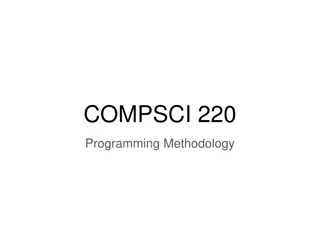
Mushroom Spawn Preparation Process: A Comprehensive Guide
Learn about the crucial steps involved in mushroom spawn preparation, from selecting the strain to harvesting mature spawn. Discover the key techniques to maintain sterile conditions for successful mushroom cultivation.
Download Presentation

Please find below an Image/Link to download the presentation.
The content on the website is provided AS IS for your information and personal use only. It may not be sold, licensed, or shared on other websites without obtaining consent from the author. If you encounter any issues during the download, it is possible that the publisher has removed the file from their server.
You are allowed to download the files provided on this website for personal or commercial use, subject to the condition that they are used lawfully. All files are the property of their respective owners.
The content on the website is provided AS IS for your information and personal use only. It may not be sold, licensed, or shared on other websites without obtaining consent from the author.
E N D
Presentation Transcript
Spawn Preparation by Dr. Subrata Giri
Introduction Mushroom spawn preparation is a critical step in the cultivation process, as it involves creating a substrate that is inoculated with mushroom mycelium. The mycelium is the vegetative part of the fungus and acts as the "seed" for mushroom growth. Here's a general overview of how mushroom spawn is prepared:
Process Selection of Mushroom Strain: The first step in spawn preparation is selecting the desired mushroom strain. Different strains of mushrooms may have unique characteristics, growth preferences, and flavors. Commercial mushroom growers often choose strains based on factors such as market demand, climate conditions, and desired mushroom characteristics. Sterilization of Growth Medium: The growth medium, also known as the substrate, is prepared to provide a nutrient-rich environment for the mycelium to grow. Common substrates include grains like rye, millet, wheat, or a mix of these. The substrate is thoroughly cleaned and sterilized to eliminate any competing organisms or contaminants that could interfere with the mushroom mycelium.
Continue Inoculation: After sterilization, the substrate is cooled to the appropriate temperature. Once cooled, mushroom spawn (consisting of grains or other materials colonized by the mycelium) is introduced into the substrate. The spawn is evenly distributed throughout the substrate to ensure uniform growth. Incubation: After inoculation, the substrate bags or containers are sealed and placed in a controlled environment with optimal temperature and humidity. During incubation, the mycelium colonizes the substrate, forming a network of white threads throughout the growth medium.
Continue Harvesting Spawn: Once the mycelium has fully colonized the substrate, it is considered mature spawn. At this stage, the spawn is ready to be used for mushroom cultivation. Commercial mushroom growers can either use the mature spawn to inoculate larger bulk substrates or sell it to other growers for their mushroom cultivation.
Conclusion It's important to maintain sterile conditions during the spawn preparation process to avoid contamination, which could lead to unsuccessful mushroom cultivation. Many mushroom growers and suppliers specialize in producing high-quality spawn for different mushroom varieties, making it more accessible for those interested in mushroom cultivation.



